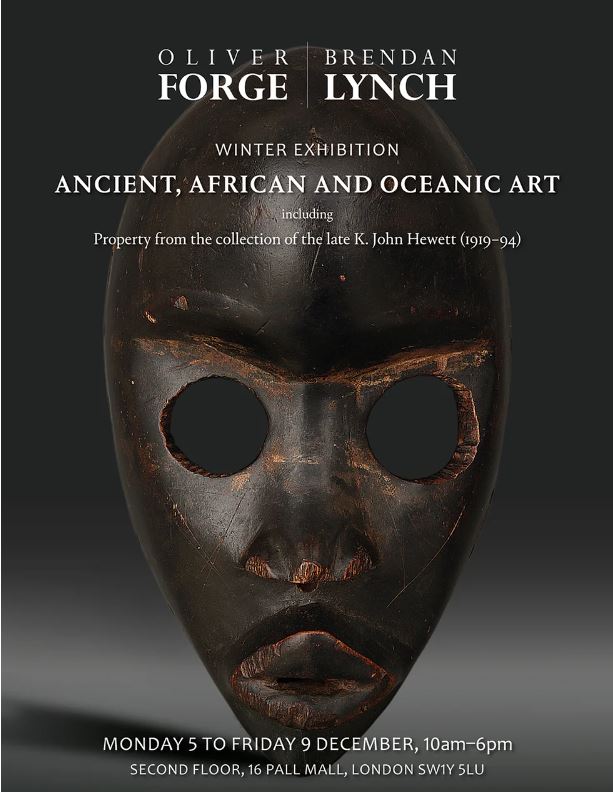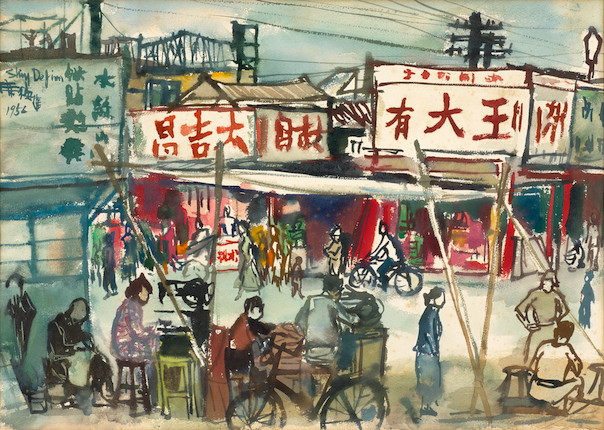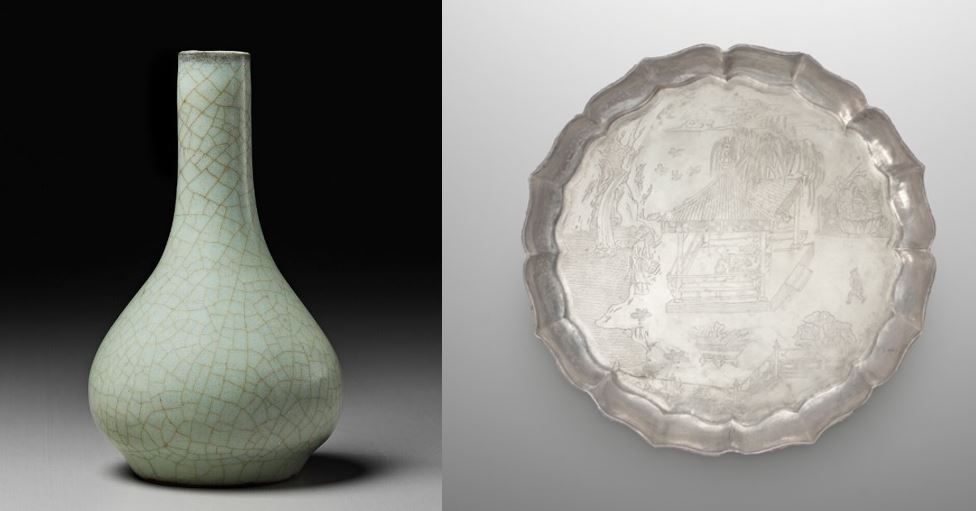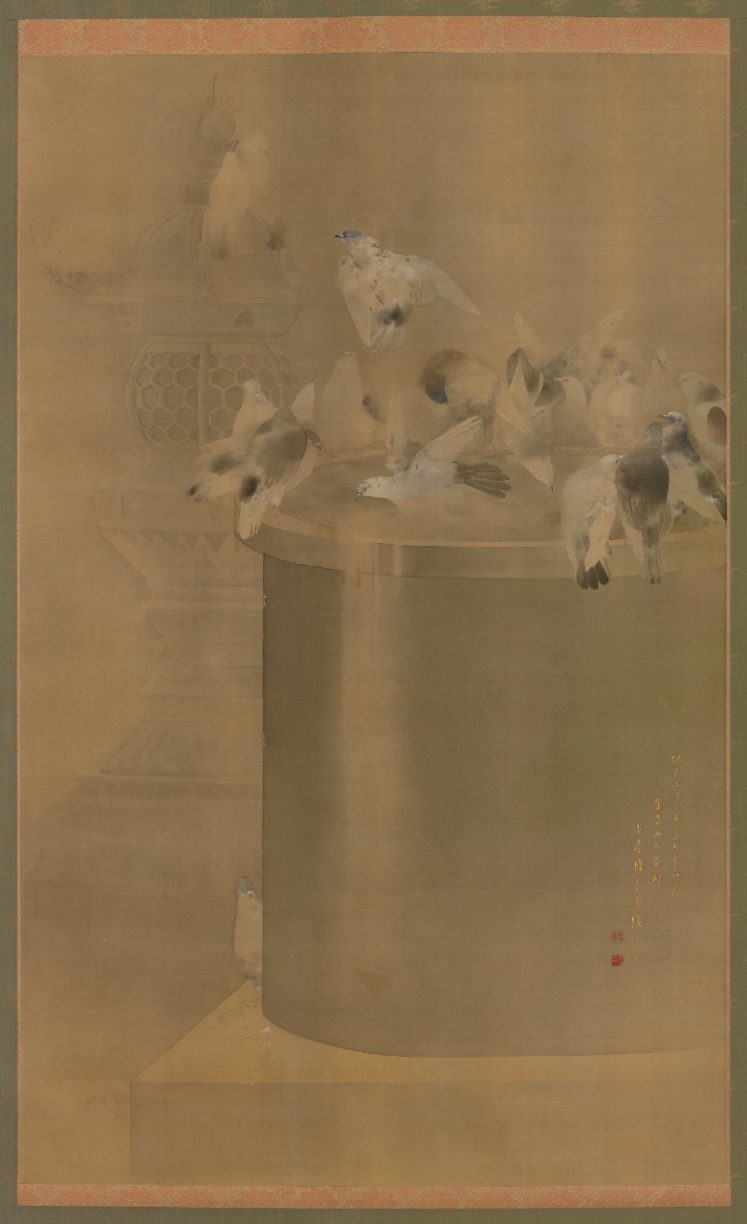L-R: A Very Rare Guan Bottle Vase, Southern Song Dynasty (1127-1279), Estimate: US$800,000-1,000,000, Christie’s and A Rare Chased Silver “Literary Gathering” Pictorial Tray, Song dynasty 12th-13th century, Estimate: US$30,000-50,000, Bonhams
The upcoming Asia Week New York March 2023 will include noteworthy auctions of the collection of one of the world’s premier art galleries, J.J. Lally & Co. Throughout his fifty years in the field, James Lally has been highly regarded for his accomplished connoisseurship, discerning taste, and thoughtful presentation of the best examples of Chinese art. Highlights from the sales in both houses are now touring in Asia.
One of Asia Week New York’s founding members, James J. Lally has been an active participant in the Chinese art market for more than 50 years. He was a director of Chinese works of art at Sotheby’s in New York and Hong Kong from 1970, and in 1983 he was named president of Sotheby’s in North America. In 1986 he founded J.J. Lally & Co. and mounted an inaugural exhibition which was sold out in the first week.
Bonhams New York
During March Asia Week, Bonhams will present fine Chinese works of art, including ancient Chinese jades, silver, bronzes, and ceramics, ranging in date from the Neolithic to the Qing dynasty, from J.J. Lally & Co.
Among the special items in the sale are A Rare Chased Silver “Literati Gathering” Pictorial Tray, Song dynasty (12th-13th century); A Jade Figure of a Recumbent Beast (Bixie), Six Dynasties Period (220-589); and An Archaistic Jade Hu-form Vase and Cover, Song dynasty.
Christie’s New York
During March Asia Week, Christie’s will conduct a live auction that will encompass Chinese ceramics and works of art from the Shang through the Qing dynasties, complemented by an online sale of the gallery’s world-class library.
Highlights of the live auction include a very rare Guan bottle vase formerly in the collection of Carl Kempe; a very rare ‘peacock feather’-glazed mallet vase, Yongzheng mark and period (1723-1735); and a remarkable imperial fahua ‘dragon’ jar (guan), Chenghua-Hongzhi period, late 15th century.












